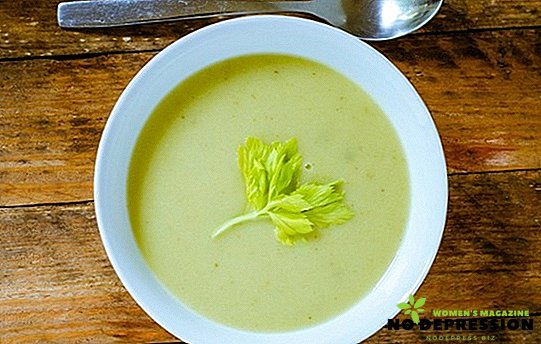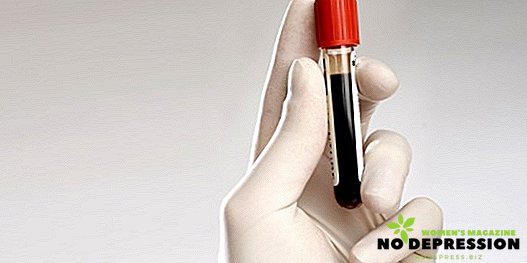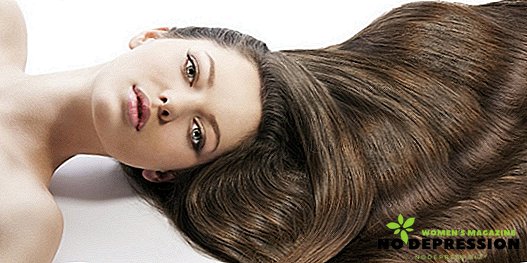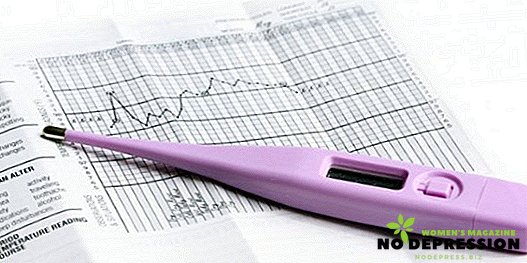Atrial fibrillation, or MA, is a disturbance in the normal heartbeat, in which there is a chaotic contraction of the atria - from 300 to 700 beats per minute. If the attack does not stop for more than two days, the risk of a blood clot increases, which can be fatal.
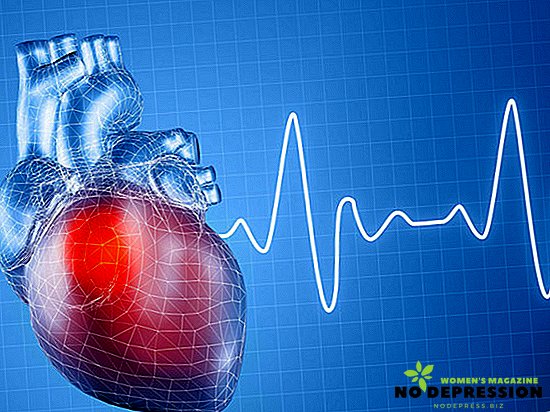
Because it is so important to consult a doctor in time for the first symptoms.
The causes of atrial fibrillation
In healthy tissues of the heart muscle, electrical impulses move in one direction, and when nervous excitations appear in the path of the impulse, obstacles appear, which causes it to turn in the other direction. As a result, additional foci of arousal are formed — with regular arousal, the tissues begin to contract, but without rhythm.
In medicine, MA is divided into the following forms:
- Paroxysmal. In this form, a breach of contractions is manifested - it can be detected using an electrodiaogram. In some cases, the symptoms disappear even without the use of drugs.
- Persistent This form is characterized by rhythm deviations longer than a week. You can stop using drugs.
- Long persistent. This form takes a year or longer, but is amenable to recovery when using drugs or cardioversion.
- Constant. In this form, it is impossible to restore the rhythm, and the disease can take a long time.
Regardless of the form, AI is very dangerous, as it quickly wears out the heart muscle, which can cause serious complications.
What can lead to MA
In most cases, the occurrence of this disease occurs after heart damage, but also many other heart pathologies may contribute to the development of AI.
These include:
- Cardiomyopathy.
- Ischemia of the heart.
- Myocardial infarction.
- Myocarditis.
- Hypertension.
There are pathological conditions in which MA can manifest itself and independently of the pathologies of the heart:
 Hyperthyroidism. A disease in which hormonal abnormalities occur due to thyroid problems.
Hyperthyroidism. A disease in which hormonal abnormalities occur due to thyroid problems.- Alcoholism, because with the consumption of large quantities of alcoholic beverages, deformation of tissues and organs occurs.
- Long reception of adrenomimetik.
- Lack of trace elements such as magnesium and potassium.
- Regular stress, nervous tension.
- Chronic bronchitis, since this disease leads to malfunction of the respiratory system.
AI may occur in the following cases:
- age over 50 years;
- overweight;
- regularly increased blood pressure;
- diabetes;
- previous heart disease.
If a person has already been diagnosed with this disease, there are the following factors that can cause seizures:
- constant overeating;
- sharp body twists;
- severe stress;
- serious physical exertion.
Most often relapses occur with a strong production of adrenaline.
Main features
Symptoms of this disease may vary in patients with different forms of AI. In the table we take a closer look at the main features:
| Form of the disease | Symptoms |
|---|---|
| Normosystolic. For a long time, the symptoms may not appear. When normosystolic form can form blood clots that enter the bloodstream. Most often affected vessels of the brain and heart. |
At the same time, Nitroglycerin does not eliminate pain. |
| Bradyarrhythmic |
|
| Tachysystolic |
|
Since MA can cause serious complications (disability, death), it is necessary to consult a doctor at the first signs.
How is the diagnosis
The doctor listens to the patient's complaints, studies the history, conducts a primary examination. In most cases, you can diagnose an attack of MA, even at the first examination, because the symptoms of the disease are pronounced.
And to confirm the diagnosis, you need to use hardware methods:
- ECG. A simple and informative way to research. He has no contraindications.
- Daily electrocardiogram, which involves tracking indicators of MA throughout the day. Through this study, even minor deviations can be detected.
- Ultrasound of the heart. It is considered the most accurate type of study, since it allows visualizing the state of the heart, detecting small deviations, and evaluating the work of the organ.
- CPEPI. This method is used if the patient is worried about pain, but there are no obvious deviations during the examination.
- KLA and BAK.

The method of the applied research can be appointed only by the doctor.
Treatment: from medication to hospitalization
The use of a particular treatment regimen depends on the form of AI and on the patient's condition. The main goal of therapy is the normalization of the heartbeat. Elimination of seizures should be done before hospitalization to minimize complications.
Most often, when paroxysmal arrhythmias use the following tools:
- Cordarone in the dosage of 5 ml of the composition per 1 kg of the body. Can not be used in parallel with the use of other drugs for arrhythmias.
- Novokainamid (solution of 10%).
- Strofantin (0.025%). Enter the tool into the vein along with saline.
- Panangam or Isparkam, which are used intravenously.
 After 30-40 minutes after the use of drugs, the patient is prescribed a repeat electrocardiogram. In the absence of sinus rhythm, the patient is urgently hospitalized.
After 30-40 minutes after the use of drugs, the patient is prescribed a repeat electrocardiogram. In the absence of sinus rhythm, the patient is urgently hospitalized.
There are other factors that, when identified, the patient is hospitalized:
- during the first attack of AI;
- with prolonged seizure (about 3-7 days), because it increases the risk of blood clots;
- if the attack fails to stop with medication.
The earlier the attacks are detected, the sooner you can seek medical help, which in most cases saves the patient's life.
Recommendations for treating seizures
Further therapy is aimed at normalizing the rhythm of heart contractions. To do this, use drugs such as:
- Amiodarone;
- Cordaron;
- Propafenone

If even after their use it was not possible to restore the heart rhythm, the patient is given special anticoagulants that prevent the formation of blood clots. Among the most effective drugs emit:
- Warfarin;
- Heparin;
- Clexane.

If a chronic form of atrial fibrillation is diagnosed, medications are prescribed to maintain the heart rate at a normal level. To do this, appoint Digoxin, Egilok and Warfarin.
Electropulse therapy and surgery
If drug therapy does not work, the patient may be offered electropulse therapy using the cardioversion method. Indications for carrying out - any complications that could arise during paroxysmal arrhythmia. The procedure is as follows:
- The patient is injected into anesthesia.
- Electrodes are placed on the chest.
- Turn on synchronization mode.
- Expose required for the treatment of the magnitude of the current (from 100 to 360 j).
- Conduct discharge.
 As a result of this therapy, the cardiac conduction system is restarted - its efficiency is almost 100%.
As a result of this therapy, the cardiac conduction system is restarted - its efficiency is almost 100%.
With frequent relapses, they can prescribe a surgical treatment, which consists in laser cauterization of the pathological foci.
The manipulation is performed using a puncture in the artery using special catheters.
The effectiveness of therapy is about 85%.
Traditional medicine
An important point: the use of traditional medicine methods is possible only after consulting a specialist. It can be used as an additional treatment to the main therapy. Perhaps the use of herbs, calming the nervous system.
Most often use infusions:
- valerian;
- clover;
- daisies;
- mint;
- melissa.
It is also possible to use hydrogen peroxide - a method of treatment according to Dr. Neumyvakin, who believes that the use of peroxide will prevent not only a heart attack, but also cancer. To normalize pressure, improve blood circulation, relieve vessel spasms, peroxide should be taken as follows:
- Dissolve 5 drops of 3% solution in 200 ml of water.
- Drink the mixture in the morning half an hour before meals.
- Take the product a second time a few hours before dinner.

The duration of treatment with this tool is not limited.
Is it possible to prevent the disease
If AI has already been diagnosed, then it is necessary to prevent the development of relapses. As Dr. Myasnikov points out, the following recommendations should be followed:
- lead a healthy lifestyle;
- Do not overload your body with physical exertion, which can lead to shortness of breath, worsening of breathing;
- to eat right and balanced, which will prevent the development of many serious diseases that can provoke an attack;
- avoid stressful situations, emotional stress;
- eliminate any other bad habits;
- observe the regime of the day, remember about a good rest.
And in order to protect oneself, one should undergo a medical examination on time, including an ECG, and in case of a deviation from the norm, immediately consult a doctor for advice.


 Hyperthyroidism. A disease in which hormonal abnormalities occur due to thyroid problems.
Hyperthyroidism. A disease in which hormonal abnormalities occur due to thyroid problems.

